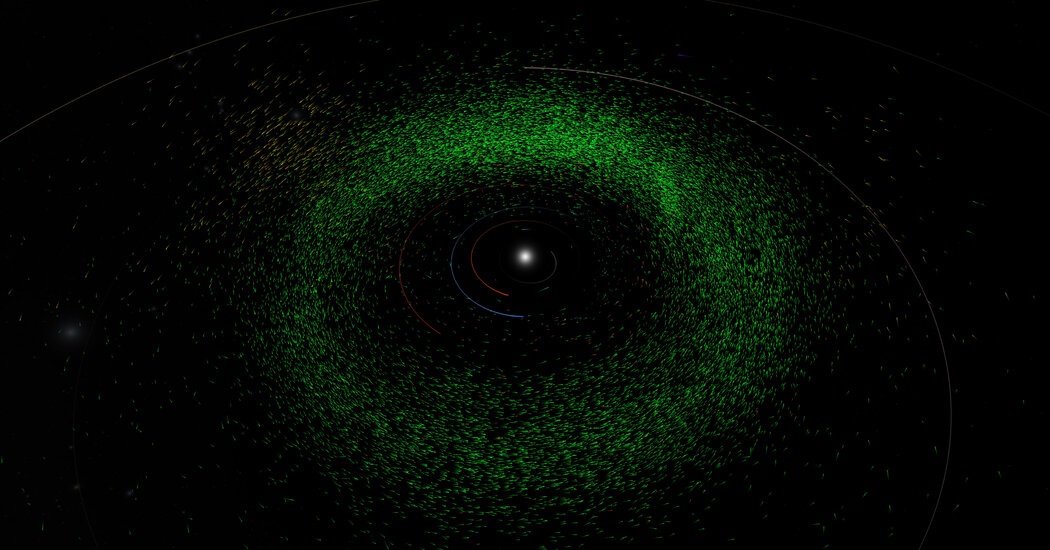With the help of Google Cloud, scientists churned through hundreds of thousands of images of the night sky to reveal that the solar system is filled with unseen objects.
A couple of years ago, a team of researchers dedicated to finding killer asteroids before they kill us came up with a neat trick.
Instead of scanning the skies with telescopes for asteroids, the scientists wrote an algorithm that sifts through old pictures of the night sky, discovering about 100 asteroids that had been overlooked in those images.
On Tuesday, those scientists, with the Asteroid Institute and the University of Washington, revealed an even bigger bounty: 27,500 newly identified solar system bodies.
That is more than were discovered by all of the world’s telescopes last year.
“This is a sea change” in how astronomical research will be conducted, said Ed Lu, the executive director of the institute, which is part of the B612 Foundation, a nonprofit group that Dr. Lu helped found.
The finds include about 100 near-Earth asteroids, the space rocks that pass within the orbit of Earth. None of the 100 appear to be on a collision path with Earth anytime soon. But the algorithm could prove a key tool in spotting potentially dangerous asteroids, and the research assists the “planetary defense” efforts undertaken by NASA and other organizations around the world.
Most of the space rocks identified by the institute lie in the main asteroid belt, between the orbits of Mars and Jupiter. Others, known as Trojans, are trapped in the orbit of Jupiter. The search also found some small worlds much farther out known as Kuiper belt objects, beyond the orbit of Neptune.
